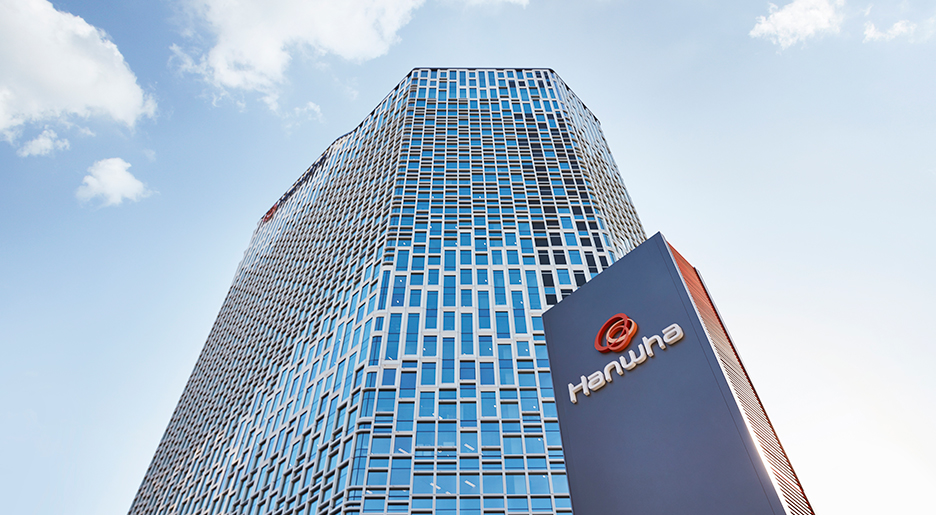SEOUL, South Korea — Hanwha Systems, the South Korean conglomerate that added a bankrupt phased-array antenna maker to its growing portfolio last year, is planning to build and deploy a constellation of 2,000 satellites in low Earth orbit by 2030 to provide connectivity to urban cargo-delivery drones and passenger airplanes.
To that end, the defense and information technology arm of Hanwha Group will invest 500 billion South Korean won ($440 million) by 2023 in developing LEO communications satellites, ultrathin electronically steerable antennas and satellite control systems.
The company unveiled this project March 29, while presenting a plan to raise 1.2 trillion won by issuing new stock for “preemptive investment” in its future businesses.
“The global competition is heating up over LEO satellite-based communications market, which has huge growth potential,” Choi Jae-woo, a senior executive responsible for Hanwha’s satellite communications business, said during an online presentation. “With ample technology and expertise built upon 20 years of engagement in military communications business, we will try to become one of the leading players in the market.”
Under its business road map, Hanwha will invest:
- 190 billion won in “developing communications technologies and satellite launch”
- 120 billion won in “acquiring technological assets needed to launch satellite communications services”
- 110 billion won in “building manufacturing facilities”
- 80 billion won in “satellite communications technologies”
Choi said trial services will begin in 2023, shortly after the first batch of satellites is launched. Regular services will be available in 2025 with the goal of recording 5 trillion won in annual sales by 2030, according to the executive.
“Between 2023 and 2025, the scope of communications will be limited to land and sea. It will be expanded to airplanes and Urban Air Mobility in 2025-2030, and to 6G internet by 2030,” he said.
A Hanwha spokesperson said while the company will rely on foreign launch vehicles to put its satellites into orbit, the development of satellites, antennas and supporting systems will be done mainly with internal resources.
Phased array antennas
Choi said Hanwha Phasor — a division created when Hanwha bought British antenna maker Phasor Solutions out of bankrupty in June 2020 — will play a leading role in developing ultrathin electronically steerable antennas that enable high-speed communications in-flight, at sea, or on land. Phasor’s proprietary technologies include flat-antenna-beam steering and semiconductor chip-design technology required for transmission and reception, accding to Hanwha.
Satrec Initiative (SI) is another Hanwha affiliate expected to play an important role in the project. SI — merged into Hanwha Aerospace in January — is the developer of South Korea’s first satellite, KITSAT-1, which launched in 1992. The company possesses core technologies needed to produce small and medium-size Earth-observation satellites, ground systems and electrooptical payloads.
U.S. satellite communications company Kymeta would be a key industry partner for pushing the project forward. In December, Hanwha Systems formed a strategic partnership with Kymeta that calls for investing $30 million to back the development of Kymeta’s next-generation solutions in return for gaining a foothold in the growing LEO antenna market.
“We are talking with other advanced players overseas to ensure the project’s smooth progress,” Choi said.
Urban cargo-delivery drones
On top of this, Hanwha Systems said it will invest 450 billion won in the unmanned urban air cargo business — 250 billion won in companies with related technologies or services and 200 billion won in making flying vehicles, ground facilities and other infrastructure.
The company has two types of vehicles under consideration — an unmanned urban air cargo vehicle that can fly 150-650 kilometers carrying up to 500 kilograms of payload, and a smaller cargo drone that can fly up to 50 kilometers carrying up to 3 kilograms of payload. The main driver of this project would be Overair, a U.S. personal electric air vehicle developer owned 30 percent by Hanwha Systems.
“LEO satellite communications system and cargo air vehicles are interconnected, creating synergy for each other,” Choi said. “That’s why we decided to make inroads into the two areas at the same time.”
